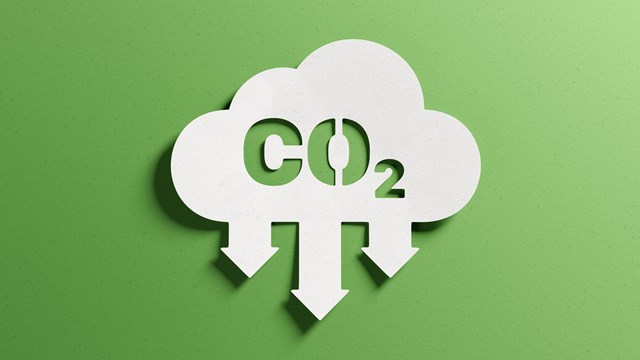
Two hundred years ago, a visitor to New York City remarked that the teeming sprawl was a "nasal disaster, where some streets smell like bad eggs dissolved in ammonia."
While few would suggest that the city reeks today quite like it did in the early 1800s, there are few things that haven't changed much; if you've lived in the city for more than about two days, you've no doubt met some of our urban wildlife congregating around overflowing garbage cans and leaky, rusted-out dumpsters. And of course, there's still that smell - that unmistakable, eye-watering stench that drifts up from the piles of black plastic bags that often line the sidewalks and can permeate half a block by late afternoon. There's nothing quite like a bag of raw garbage left to marinate in the baking summer sun, and since New York produces 13,200 tons of garbage per day - which works out to just under four pounds per person - there are an awful lot of black plastic bags lying around, and an awful lot of fat-and-sassy rats.
As trashy as New York City can sometimes feel these days, it's nothing compared to what the place was like 150 years ago. Ever since the first Dutch settlers arrived in what would eventually become New York, garbage disposal has been an uphill battle. Back then, it was simply tossed out onto the street, allowed to rot in ditches along the thoroughfares, and left in huge heaps that became playgrounds for vermin and poverty-stricken children. Even the stately mansions along Central Park threw out their household waste like everybody else - and contributed to the pall that hung over most of the city. In more densely-populated areas of town - like the filthy, overcrowded slums of the Five Points on Manhattan's Lower East Side - garbage runoff and sewage contaminated public drinking water, giving rise to disease and sky-high mortality rates for young and old alike. Offshore, the East River was a stinking mess, choked with all the refuse of downtown New York, which citizens tossed off the end of a pier built expressly for garbage dumping.
By 1898, however, the city's Metropolitan Board of Health got wise and issued a proclamation forbidding "the throwing of dead animals, garbage or ashes into the streets," and New Yorkers were ordered to stop dumping their garbage off the East River pier.
According to John Pampalone, Assistant Director of Public Information for the Department of Sanitation for the City of New York (DSNY), trash disposal was a weighty issue at the turn of the century. "In 1881, there were reform organizations wanting an independent street cleaning department - the debate was whether street cleaning and garbage collection should be under private or public control," says Pampalone. "By 1895, Colonel George E. Waring was appointed commissioner of the Department of Streets Cleaning. He created a military-like approach to street cleaning that transformed the waist-high, filth- and garbage-laden streets into some of the cleanest streets in the world. His Department [also] collected refuse and recycling with horse drawn carts." Waring's Department of Streets Cleaning was the precursor to today's Department of Sanitation, says Pampalone, and his new waste management initiatives were carried out by a small army of sanitation workers known as the "White Wings" after their meticulous white uniforms.
Waring's programs cut down on the sheer tonnage of trash that had to be dealt with and eased some of the environmental stress that ocean and river dumping had caused. Unfortunately, the rise of Boss Tweed's Tammany Hall political machine and all its attendant corruption, double-dealing and appeasement spelled the death of Waring's innovative programs, and by the end of the 19th century, New York's garbage was going right back into the water.
With Waring's ideas scrapped, the city's population exploding, and more and more trash being produced daily, the city added landfills and incinerators to its arsenal of trash disposal methods.
The problem was eased a little with the establishment of a huge garbage incinerator on Governors Island and subsequent proliferation of incinerators in residential and commercial buildings. Instead of letting trash sit around moldering on the stoop, apartment-dwellers just threw their waste down a conveniently placed chute. Once the catchall at the bottom of the chute was full, the building super could hit a switch, and all the building's trash would be up in smoke, literally. Tons of trash were also disposed of in the form of landfills for public works titan Robert Moses' massive construction projects.
And, of course, ocean dumping continued. Throughout the early part of the 20th century, the practice resulted in massive quantities of trash washing up on the shores of New Jersey - everything from banana peels to animal carcasses to medical waste came to rest on the beaches outside a handful of blue-collar coastal towns. In 1935, after repeated, unsuccessful entreaties to the city to stop ocean dumping, a coalition of New Jersey towns finally won a federal lawsuit to force the city to quit.
To compound the issue, plans for bigger, better incinerators had been put on the back burner (so to speak) when the Great Depression hit, and suffered another setback with the start of America's involvement in World War II. New York's population continued to grow, however, and the sanitation situation was hardly something to write home about. All that raised the question of what to do with all the garbage that couldn't be burned, buried, or sent out to sea.
Since Col. Waring's administration in the middle of the 19th century, a healthy portion of New York's garbage had been hauled out of the city to a section of Jamaica Bay called Barren Island. There, the tons of filth sat and stewed, while a small army of ragged, ill-nourished poor worked the dump as they had the refuse heaps in the inner city, looking for anything of use or value.
Despite the collapse of Waring's sanitation initiatives, Barren Island continued to receive the city's offal until the early 1900s, when wealthy Jamaica Bay landowners petitioned Tammany Hall lawmakers into shutting down the operation, which threw a powerful stench all across the bay (and their sprawling, pastoral properties).
But where would all the garbage be sent, if not to Barren Island? The rich landowners had a ready suggestion: The offending trash would be sent to the western shore of Staten Island, where the petitioners had taken the liberty of constructing a reducing plant, which they offered to run for the city - for a certain fee, of course.
Despite the vehement objections of Staten Island residents, the Fresh Kills landfill became a permanent - if unofficial - institution, and Staten Islanders got the dubious honor of being named stewards of the city's refuse.
Of course, like many such insider deals struck in the name of progress, the waste-management plant on Staten Island was not built with the comfort and well being of the locals in mind: the first processing facilities put on the landfill to reduce the trash and produce useful by-products were far too small for the massive job, and as a result, acres of raw garbage sat around for months, producing noxious, horrible-smelling gasses and fumes that blew downwind, sickening people for miles around and turning the dump site into a nightmarish wasteland.
Eventually, the inadequate processing plants were closed, but the landfill itself stayed open - with the help of a series of federal consent orders - and what garbage couldn't be processed there was again dumped at sea, where it floated or sank"¦or wound up right back where it started, washing up on the beaches of New York and New Jersey. Throughout the Great Depression and both World Wars, the dump on Staten Island continued to grow - along with the resentment of the people forced to live anywhere near it.
Despite all that, and the fact that the site was inadequately prepared to handle such a volume and thus leaked untold tons of poisonous chemicals into the groundwater beneath it and wafted foul odors and noxious fumes as far away as New Jersey, in 1948, Fresh Kills landfill was officially - though only "temporarily" - established in Staten Island, and in short order became the world's largest city dump. The enormous landfill towered higher than the Washington Monument at its highest point, and would eventually consume nearly 3,000 acres to become the largest manmade object on the planet.
Up until the late 1950s, the city handled all garbage disposal - both residential and commercial. That changed in 1957, however, when the city opted to ease its waste-management burden by mandating that commercial businesses hire privately owned carting companies to haul off their trash. While this approach did manage to get a portion of the city's garbage off the street on someone else's dime, municipal planners didn't take into account who was collecting all those dimes: the mafia.
In short order, the mob overran the private carting industry in the city and engaged in - shall we say - price gouging. What began as a money-saving measure wound up costing the city millions in anti-racketeering investigations and prosecutions and ushered in an era of organized crime that was in full swing until the late 1990s.
While the real-life Corleones were growing rich off the fat of the land, the city itself was torching almost a third of its trash in 22 government-owned and over 17,000 privately owned incinerators - sending at least part of the problem of waste removal up in smoke.
And - like the stench wafting off Staten Island - the smoke was a problem. So much so that from World War II until the late 1960s, a kind of perpetual haze lingered over the city as a result of the millions of tons of raw trash being burnt every year. Finally, in 1968, Local Law 14 was passed in an effort to reduce air pollution over New York City. The law mandated that all incinerators be converted to compactors, and forbade the burning of trash in the city.
The ban on incinerators raised the ire of residents and building owners concerned about the cost of converting relatively small, unobtrusive incinerators over to larger, more complicated compactors. The job of designing a smaller, more space-efficient commercial compactor for residential use fell to the St. Ann's Marketing Company, a steel manufacturer based in the Bronx. According to Isabel M. Alcantara, manager of HiCO, the compaction company directly descended from St. Ann's, "It took a few tries to come up with a piece of equipment that was powerful enough to handle tons of trash, yet economical in size to fit into the limited spaces formerly occupied by incinerators," but, "by 1970, just over a third of the apartment buildings in New York had converted to compaction systems."
The incinerator-to-compactor law did succeed in improving the grimy air over New York, but, says Alcantara, "[It was] mostly City Housing Authority buildings and upscale buildings in Manhattan that could afford to convert"¦Small owners shut down their incinerators and placed their garbage into cans."
More garbage in cans on the street led to longer hours, worse working conditions and higher stress on the city's sanitation workers, which in turn led to one of the most aromatic labor disputes in city history as the garbage collectors went on strike.
Says the DSNY's Pampalone, "On February 2, 1968, the Uniformed Sanitationmen's Association led by Local 831 President John Delury walked off their jobs. The walkout was triggered by two factors; poor, dangerous working conditions, and low pay." For over a week, nobody touched the mounting garbage on New York's streets. "The effects on the city were severe," continues Pampalone, "but it could have been much worse if the walkout had occurred during the summer months. The strike was resolved through arbitration. The workers were given salary increases and working condition improvements. Once these issues where settled, the department was able to fully clean the city within a week."
By the end of the 1970s, with the strike behind them and nearly all the trash-burners in the city converted to compactors, New Yorkers had to contend with burgeoning populations of rats and roaches, as well as with where to send all the compacted trash. By the time the very last municipal incinerator put out its fires in the early 1990s, there was pretty much just one real option for the 13,000-plus tons of trash collected in the city every day: Fresh Kills.
By that time however, expanding residential development coupled with environmental awareness had thrown the future of Fresh Kills into serious debate. It was generally accepted that the landfill would be shut down within a decade, but that in turn raised the question - again - of where all the trash would be taken for processing and disposal.
Also at issue was the matter of the transfer stations necessary to expedite the shipment of garbage out of the city, wherever its final destination might be. Over 100 stations processed the city's garbage on its way to the dump at Fresh Kills, but more would be needed if the trash had to be trucked farther afield. Not surprisingly, nobody seemed to want their neighborhood to play host to any new stations - transfer stations produce air pollution, vile smells, noise, and traffic snarls. But thanks to the deep pockets and powerful lobbying efforts undertaken in wealthier areas, garbage processing plants were very often built in economically depressed, predominantly minority neighborhoods in Brooklyn and the Bronx, where they contribute to health problems - like asthma among children - and give the impression that the host neighborhood is good for little else but garbage, which makes civic pride and development a very tough sell.
For the moment, according to Pampalone, "The NYC Department of Sanitation has signed contracts with private waste haulers who dispose of the 12,000 tons [of waste] the department collects each day from residents and delivers it to private waste transfer stations. From there, the refuse is sent out to pre-approved landfills and incinerators in Virginia, Pennsylvania, New Jersey, and Ohio."
Between the need for more landfill space and transfer stations, the vehement rejection of treatment station building proposals, opposition from potential remote dumping sites, and the city's alarming budget crisis, the issue of trash collection in New York City seems to be perpetually caught in the teeth of powerful competing interests.
Perhaps no situation illustrates this as poignantly as the recent developments involving the Fresh Kills landfill. As per a campaign promise made by former New York City Mayor Rudy Giuliani, Fresh Kills processed its last barge-load of garbage on March 22, 2001. The mayor, surrounded by city dignitaries and Staten Island residents, swung the gates to the landfill shut and snapped a symbolic padlock closed, officially ending Fresh Kills' career as the world's biggest city dump. Both before and after the ceremony, engineers, ecologists, and other environmental scientists were applying their knowledge and skills to turn back the clock on Fresh Kills and return the 3,000 acres of landfill back into salt marsh, forest, and wetland capable of supporting healthy wildlife and providing a safe, non-toxic environmental resource for the people of Staten Island.
That endgame will take a while, according to Pampalone. "Fresh Kills is currently undergoing closure work that will take many years to complete, since it entails capping the closed sections of the landfill and installing required environmental controls. The landfill will also undergo a 30-year monitoring period required under federal laws before any type of end-use can occur, such as conversions to park and recreation space."
Those well-laid plans were derailed, however, with the terrorist attacks of September 11th. When the World Trade Center towers collapsed, among the staggering questions of how to cope with the disaster was what to do with the physical wreckage of the buildings themselves.
According to Pampalone, "On September 12, 2001, the landfill started receiving material from the WTC disaster site and became the site of the nation's largest search-and-recovery operation. By July 2002, the recovery operation was completed and the landfill was again officially closed."
According to the DSNY, over one million tons of steel, concrete, and other debris - which inevitably would include remains of the attack victims - were taken by truck and barge back to Fresh Kills, which received $29.2 million of a $66,745,285 federal grant "to restore and maintain operations, making it functional as a receiving site for debris from the World Trade Center, including barge loading and unloading at transfer stations; hauling, spreading and sorting of debris onsite; and safety measures necessary to prevent hazardous conditions." The money was also intended as "disposal for costs associated with labor and for the use of barges required to transport debris from Ground Zero to Fresh Kills Landfill," and another $7.1 million "for environmental monitoring, the collection and disposal of gas condensate, and leachate control at the Fresh Kills Landfill."
Today, says Pampalone, "The single biggest challenge the DSNY faces each day is the final disposal of the waste generated by the 3.5 million households. Currently, the department uses a truck-based waste removal operation. The city plans to implement a long-term solution that utilizes rail or marine-based transportation methods for the final disposal of the waste generated every day by NYC residents."
Today, activity up and down our streets continues non-stop as sanitation workers - often called "New York's Strongest" - work to relieve us of the remains of our day. How we'll continue to cope with the abundance of people - and their trash - within the city is open to debate, but one thing is certain: it's an uphill battle fought waist-deep in banana peels, empty yogurt cups, broken glass, and the terminally cheerful rats.






2 Comments
Leave a Comment